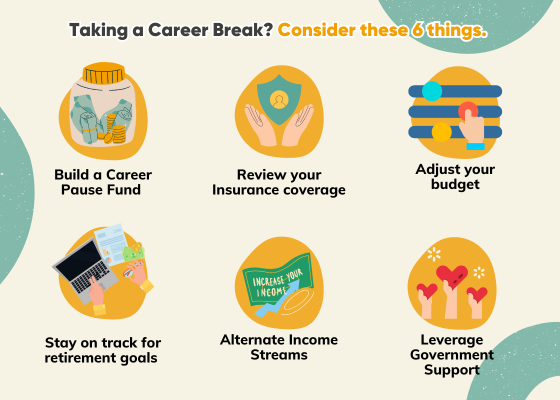Note: It was announced in November 2023 that MoneyOwl will be acquired by Temasek Trust to serve communities under a re-purposed model, and will move away from direct sale of financial products. The article is retained with original information relevant as at the date of the article only, and any mention of products or promotions is retained for reference purposes only.
______________
Find out why MoneyOwl’s philosophy goes beyond “Buy term, invest the rest”.
In March 2019, I gave a talk at the Seedly Personal Finance Festival entitled “Insurance – Cutting Out the Fluff” to an audience of almost 1,200 young people. During the talk, I shared how most of our needs can be solved by using low-cost term insurance and there is no need to buy costly whole life plans. Almost immediately after the event, someone shared an article on Seedly’s Facebook page showing why what I shared might not be valid. The writer of the article reasoned that a whole life plan is actually cheaper than a term plan if you consider the cash value accumulated. The table below (column A and B) shows the writer’s analysis

*Non-guaranteed cash value based on projected investment returns of 4.75% p.a.
The writer’s conclusion is that the whole life policy provides better value in the long term with a projected cash value of $156,504 if you didn’t make a claim and live till age 75 and wish to surrender it, whereas, for the term plan, you get nothing back at the end of the coverage term. And if one wants insurance coverage at age 75, no insurance companies will insure you.
While the analysis above seems like a pretty clever way to show why whole life might be a better choice over term insurance, the thinking is actually not sound and is biassed towards the more expensive whole life plan. Let me explain.
- We need to go back to the fundamental reason why we buy insurance – it is for protection and not savings or investment. If getting an investment return (like cash value) is what you want, there are other better instruments to use.
- If insurance is for protection, what are we protecting against when we buy a critical illness plan? The basic reason is to protect against a loss of income if we were to contract a critical illness. If the reason for buying a critical illness plan is to pay for medical expenses not covered by Integrated Shield Plans, then a whole life plan is suitable and there is no need to compare against the term plan. This analysis is then redundant.
- If we are buying a critical illness plan to protect against income loss, we don’t need whole life cover. We only need it until we no longer have an income to replace it. For most, it would be till 65 years old, 70 years old, or at most, 75 years old.
- In terms of the amount of coverage, we probably need about 3 to 4 years of our income. So, if we earn $80,000 p.a., we will need about $320,000 coverage.
In his article, the writer used a more expensive term plan to compare against the whole life plan. But I found a cheaper option by combining term insurances from two insurers (column C) and it was whopping 30% savings compared to the term plan he used (column B). So instead of paying $2,607 p.a. for a $100,000 whole life coverage, we only need to pay $1,173 p.a. for a $100,000 term coverage till age 75. But if we want to cover ourselves sufficiently (say up to $320,000 coverage), we will see at once why using a whole life plan becomes really unaffordable.
But what about the cash values we can get at age 75 when we surrender the whole life plan? Wouldn’t that make buying the whole life plan better than term insurance? Yes. But since insurance is for protection, one should focus on getting himself fully covered instead of the possibility of a cash value at age 75 years old. To sacrifice coverage for a future cash value goes against the primary reason why we buy insurance in the first place. That is not wise.
And by the way, we are only getting cash values from a whole life plan because we are giving the insurance company extra premiums. In this example, an extra $1,434 p.a. (column A-C) for 25 years to invest. If we really want the same return ($156,504) as the whole life plan, we can invest the $1,434 p.a. from the savings of buying the term plan over the next 25 years (the same premium term as the whole life plan in this example), into a portfolio that can give 4.5% p.a. to give you almost the same cash value of the whole life plan at age 75. This can be reasonably achieved by a portfolio with an asset allocation of 60% equities, 40% bonds. But really, we are not buying terms so that we can invest the rest to get a return. We buy term because it is the most affordable way to be fully covered.
Since 2003, I have been writing about using term plans instead of expensive whole life plans for protection. For that, I have drawn much flak from advisers. But why am I so conscious about lowering the cost of insurance? This is because we do not plan our insurance needs in isolation from our total financial planning needs. We all have limited financial resources but unlimited needs and wants. As an adviser, I need to ensure that after insurance needs are taken care of, I leave enough money for the client to plan towards other areas of needs such as retirement and funding their children’s tertiary education while still leaving enough money to live a life now. Because life does not begin at retirement. Life begins today. Financial planning is not just about planning for the future, it is also about making sure we can live a meaningful life now.
Christopher Tan is the CEO of Providend, a fee-only retirement financial adviser. The edited version was published in The Sunday Times on 31 March 2019 and was updated on the website in July 2021.
Announcement: With effect from 1 June 2022, MoneyOwl is a 100% NTUC Enterprise (NE)-owned company.




